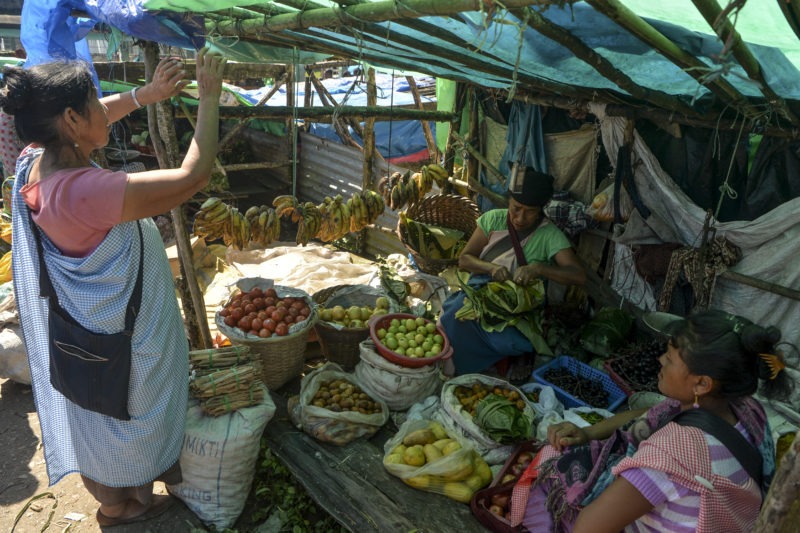India shelves consumer spending report after leaked data shows slump
Spending in India on food, education and clothing declined for the first time in four decades, according to a leaked report (DIPTENDU DUTTA)
Mumbai (AFP) – India said Friday that it would not release a controversial report on shrinking consumer demand after a leading business daily leaked data showing that per capita spending had slumped for the first time in four decades.
The report is bad news for Prime Minister Narendra Modi, who has struggled to revive India’s stuttering economy.
Consumer demand in India’s villages fell 8.8 percent between July 2017 and June 2018, compared with 2011-12, the Business Standard reported, using unpublished National Statistical Office (NSO) data.
Two-thirds of India’s 1.3 billion population lives in rural areas, making it a key economic driver. But spending on food, education and clothing declined, with demand for essential items such as cereals plunging 20 percent, the newspaper said.
Although urban consumption rose by two percent, overall per capita monthly spending in the country slipped 3.7 percent — the first time it has fallen since 1972-73, the business daily said.
The report was scheduled for release in June but was delayed because of its “adverse” findings, the Business Standard said, citing sources familiar with the matter.
The ministry of statistics slammed the claims, saying that the government had decided not to release the report following the recommendations of an expert committee.
“Concerns were also raised about the ability/sensitivity of the survey instrument to capture consumption of social services by households especially on health and education,” a ministry statement said.
“In view of the data quality issues, the ministry has decided not to release” the report, it said.
A ministry official had earlier told AFP the report was not finished.
The data “can only be confirmed once the ministry publishes the report”, A.K. Mishra said.
– Prolonged slowdown –
The decision to bury the report comes as Asia’s third-largest economy battles a prolonged slowdown.
In January, the Business Standard reported that unemployment had surged to a four-decade high during Modi’s first term in power, citing unpublished government data.
The delay in releasing the jobs report prompted a top Indian government statistician to quit in protest.
The report confirming the jobless data was finally released in May, after Modi was re-elected with a thumping majority, defeating challenger Rahul Gandhi.
On Friday, Gandhi hit out at the government’s alleged attempt to bury unflattering data. “Modinomics stinks so bad, the Govt has to hide its own reports,” he tweeted.
To counter the fall in demand for everything from cars to cookies, India’s central bank has trimmed interest rates five times in a row, but to little effect.
Experts say India’s economy has never recovered from Modi’s surprise cash ban in 2016, which made 86 percent of the currency in circulation void. Many small businesses shut up shop and hundreds of thousands lost their jobs.
The rollout of a nationwide Goods and Services Tax (GST) in July 2017 worsened the situation as businesses struggled to adjust to the new rules.
In October, market researcher Nielsen said Indian rural consumption had slumped to a seven-year low, highlighting falling income for farmers who are struggling with mounting debt.
Disclaimer: Validity of the above story is for 7 Days from original date of publishing. Source: AFP.


